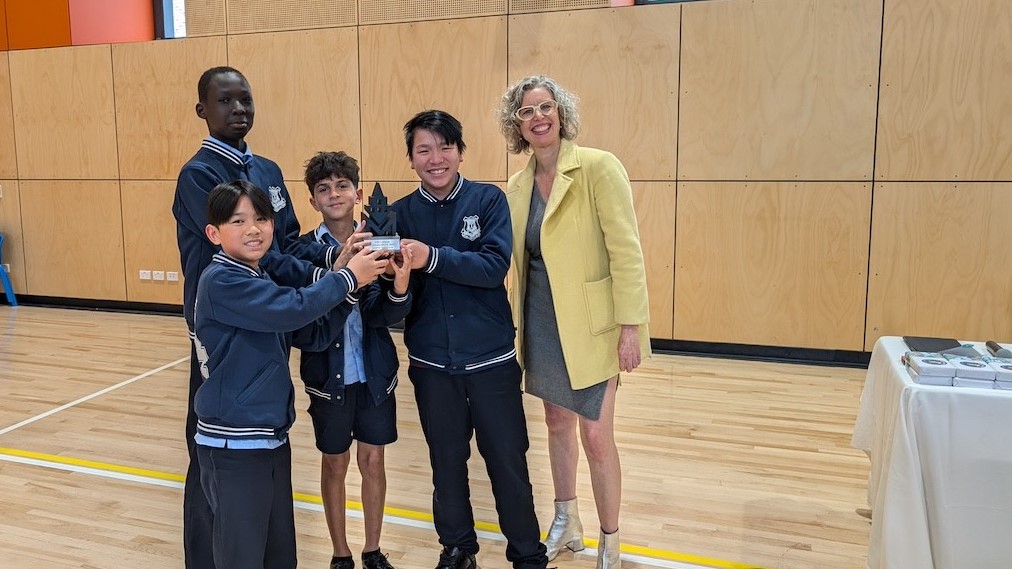Space exploration is shaping our world and the next generation.
Students from ten schools around the country will head to the Australian Space Discovery Centre in Adelaide later this month after reaching the final round of the Kids in Space program.
The Australian-first program is a partnership between the Australian Space Agency and Andy Thomas Space Foundation.
Adelaide-based start-up Makers Empire deliver this program, which aims to inspire space-themed STEM learning and design thinking among the next generation.
This year marked the program's second edition — reaching more than 115 primary schools and receiving participation from over 16,000 students.
Almost half the schools that participated were located in regional, rural and remote regions of the country.
Head of the Australian Space Agency Enrico Palermo said inspiring young Australians about the importance of space is fundamental to the Agency’s mission.
"The Australian Government’s Future Made in Australia will only be realised through cultivating the next generation STEM workforce,” said Mr. Palermo.
The space generation
A new study finds that space is almost every Australian child’s dream with a whopping 87 per cent interested in finding new planets, stars, and galaxies.
The research has also found seven in ten kids from “The Space Generation” want to go to space one day, while 75 per cent of parents agree their kids are more likely to travel to space than previous generations.
The Kids in Space program is an independent testament to this study as it saw an uptick of 62 per cent in participation from its inaugural edition in 2023.
“The program uses the wonders of space to ignite the interest of young Australians in STEM – preparing them for a future where those skills are increasingly vital.
Importantly, too, this program touches almost every part of Australia – from our city suburbs to the remotest parts of our bush – creating opportunities for young people from all different backgrounds,” said Mr. Palermo.
On 18 November, the designs, and collaboration, of the ten schools selected for the final round will be put on display at the Australian Space Discovery Centre.
The finalists are....
- Buninyong Primary School, Ballarat, Victoria
- Charlestown Public School, Newcastle, New South Wales
- Lauderdale Primary School, Lauderdale, Tasmania
- Maryvale State School, Toowoomba, Queensland
- Our Lady Queen of Peace School, Adelaide, South Australia
- Rosary Primary School, Canberra, Australian Capital Territory
- Sacred Heart Catholic Primary School, St Albans, Victoria
- St Joseph’s School Waroona, Perth, Western Australia
- St Peter’s Woodlands Grammar School, Adelaide, South Australia
- Wagaman Primary School, Darwin, Northern Territory
Real-world and out-of-world STEM learning
Peter Nikoloff, Executive Director, Andy Thomas Space Foundation points out that with almost 700 applications from teachers across Australia for Kids in Space program this year "it’s clear that Australian schools are more eager than ever to help students develop an interest in space."
Reflecting on the program so far, Jon Soong, CEO of Makers Empire, said that "we love engaging students in real-world STEM learning with industry links, and helping them develop skills in critical thinking, communication, collaboration, and citizenship.”
Media Gallery
Click on the images to read the descriptions of each of the ten schools selected for the final round of the Kids in Space program.

Express your interest for the 2025 edition of the Kids in Space program
Teachers and schools in each Australian state and territory are invited and encouraged to apply for the next edition of the program.
Main image: Australian astronaut Katherine Bennell-Pegg at a Kids in Space event in Adelaide earlier this year.
Credit for all images in this article: Makers Empire













